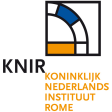Summary
- The “Bassa Romadiola” project investigates the north-western part of the Ravenna region, the so-called Bassa Romagna. So far (2021), we have included in our investigation approx. 78 sq. km, 52% of the whole sample area (150 sq. km); inside the examined sample, approx. 18 sq. km had a minimal level of visibility and they were investigated through intensive artefact surveys . Several field campaigns took place since the beginning of the research: in 2009, in the area of Lugo; in 2011, in the area of Conselice; in 2012, in the area of Bagnacavallo and Fusignano; in 2016, in the area of Bagnacavallo and Lugo; in 2018, in the area of Cotignola. Moreover, in 2018, the project became part of more extensive research by the University of Bologna, the “Ravenna Landscape Project”, which includes two other landscape archaeology investigations focussing on the territory of Cervia (Cervia project) and Faenza (Faventia project). ............................................................................................................................. Please cite this Record as: Cavalazzi M, 2022. Bassa Romandiola Project, 2009-2018. Fasti Online Survey [distributor]. Permalink: https://www.fastionline.org/survey/site/AIAC_498
Project Dates
- 2009 - present
Periods
- No period data has been added yet
- 2600 BC
- 1650 BC
- 1500 AD
- In the “Bassa Romandiola” project the distance between the field walkers was 10 m. The area included in the transects of the sample is equal to 150 km², namely 22% of the Bassa Romagna sub-region (525 km²). So far (2021) the sample examined is equal to 78 km²; only a fraction of this area, the 23% (18 sq. km), had a minimal level of visibility and it was investigated through intensive artefact survey. It has been considered a “site” the concentration of artefacts, that clearly stands out from the local artefact density; thus, sites are not defined on the basis of a general artefact threshold, but rather according to the local density value; the Topographic Unit (TU) is the topographical feature in which the site is located, as well as the trace in landscape of the action of Human - Natural factors (e.g. a field, a wood etc). Land Use / Land Cover has been registered as well as the visibility values of each TU investigated. The visibility evaluation followed a multi-criteria decision process that took into account several measurable factors: Land cover/land use; Sky brightness; Presence/absence of a dusty patina on artefacts; Wetness index. Any find (in and off-site) has been recorded with an uncorrected GPS; however, only in the case of complex sites (e.g. Roman villas, nucleated sites such as villages etc.), the collection of artefact has been carried out, including the concentration of artefact in a grid composed of 5x5 metres squares. All the artefacts have been collected, apart from the architectural non-diagnostic materials (e.g. fragments of bricks). The dataset is composed of 3 files, in EPSG:4326 1) the research area (bassaromandiola_research_area.shp); 2) the limits of the transects (bassaromandiola_transects.shp); 3) the Topographical Units investigated in 2009-2018 seasons (bassaromandiola_TU.shp).
Other Comments
- Research Director: Andrea Augenti, Università di Bologna; Field Director: Marco Cavalazzi, Università di Bologna - marco.cavalazzi3@unibo.it; Team members: Michele Abballe, Ghent University, Geoarchaeological research Celeste Fiorotto, University of Verona, Palaeobotanical analysis Alice Ferrari, University of Bologna, Pottery analysis Michela De Felicibus, University of Bologna, Communication and Public archaeology
- The project aims to investigate the diachronic evolution of the settlement patterns in the northern part of the Ravenna Greater Region, focusing in particular on the period included between the end of the Roman Period and the Middle Ages.
- Comune di Cotignola (RA), Comune di Lugo (RA), Comune di Fusignano (RA), Comune di Conselice (RA)
Director
-
Director
- Andrea Augenti – Università di Bologna
- Marco Cavalazzi – Università di Bologna




![Edit [ed]](/survey/skins/fastisur/images/plusminus/edit.png)
![View [view]](/survey/skins/fastisur/images/plusminus/view.png)

![Download [PDF]](/survey/skins/fastisur/images/results/download_sml.png)